人教高中英语必修四 Unit 4 Body-language Reading 课件(共14张PPT)
文档属性
| 名称 | 人教高中英语必修四 Unit 4 Body-language Reading 课件(共14张PPT) | 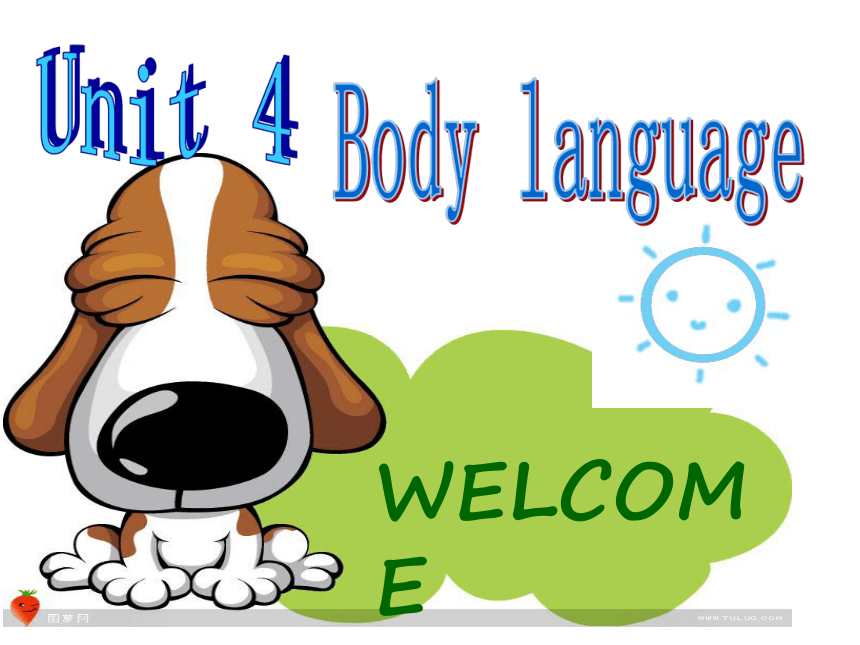 | |
| 格式 | ppt | ||
| 文件大小 | 1.8MB | ||
| 资源类型 | 教案 | ||
| 版本资源 | 人教版(新课程标准) | ||
| 科目 | 英语 | ||
| 更新时间 | 2020-11-15 17:54:29 | ||
图片预览

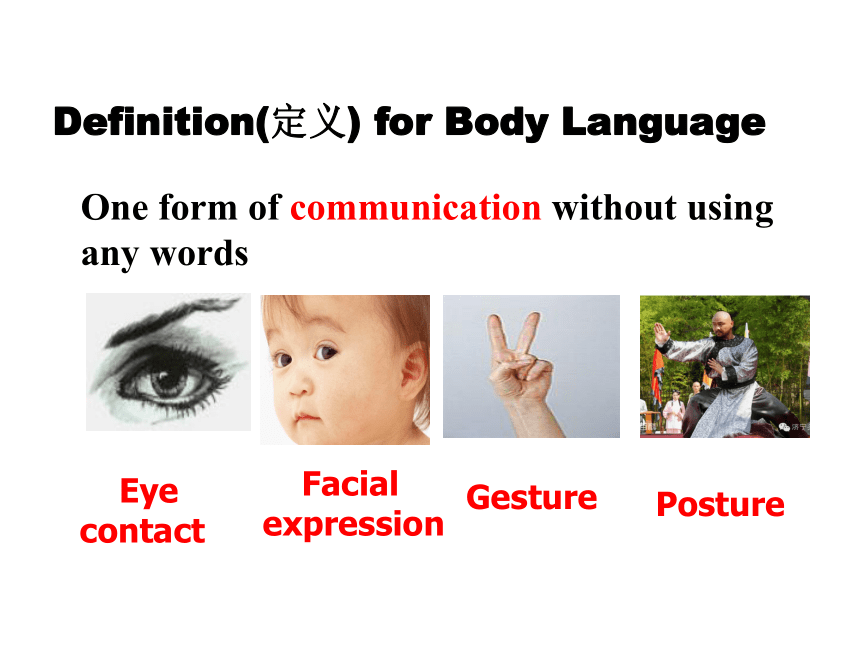

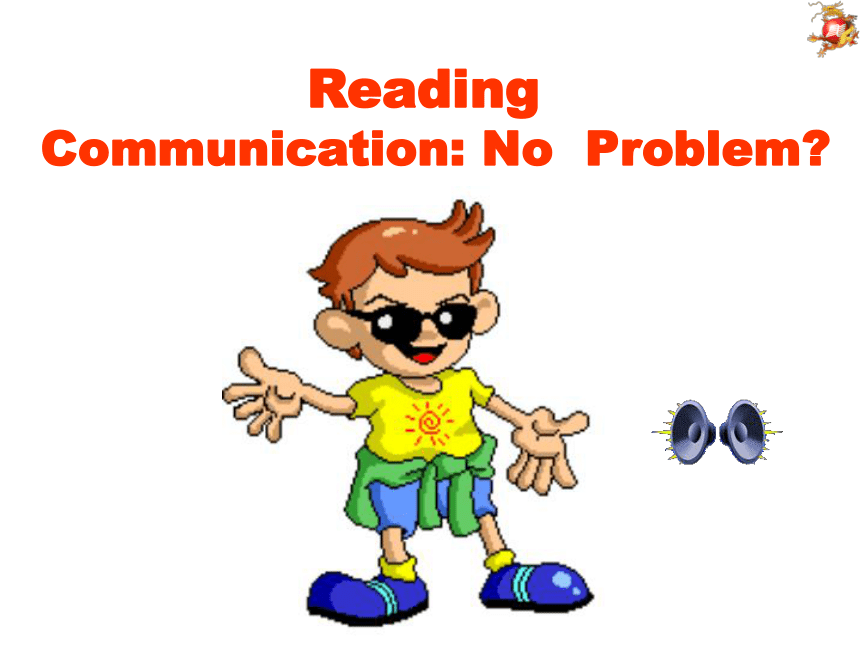
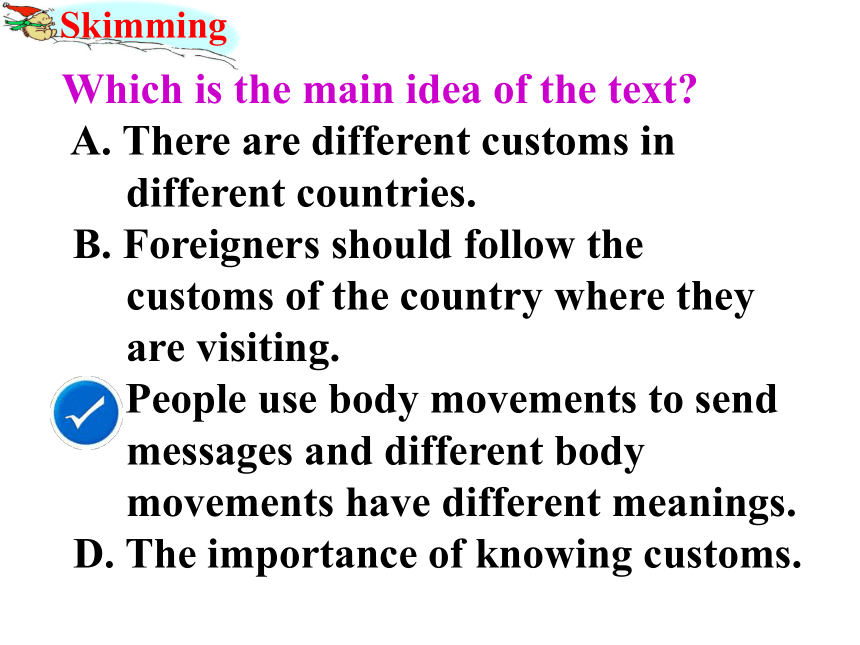
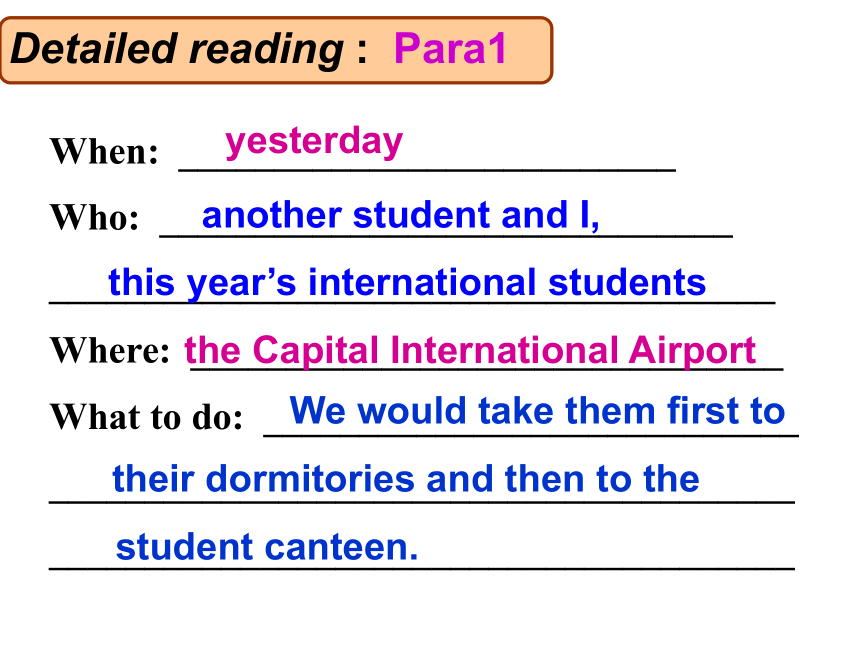

文档简介
WELCOME
Definition(定义) for Body Language
One form of communication without using any words
Eye contact
Facial expression
Gesture
Posture
Reading
Communication: No Problem?
Which is the main idea of the text?
A. There are different customs in
different countries.
B. Foreigners should follow the
customs of the country where they
are visiting.
C. People use body movements to send
messages and different body
movements have different meanings.
D. The importance of knowing customs.
Skimming
When: __________________________
Who: ______________________________
______________________________________
Where: _______________________________
What to do: ____________________________
_______________________________________
_______________________________________
yesterday
another student and I,
the Capital International Airport
this year’s international students
We would take them first to
their dormitories and then to the
student canteen.
Detailed reading : Para1
Find out the two cultural mistakes in Para2
Tony Garcia
Julia Smith
The first mistake
(Columbia )
(Britain)
He approached Julia, ________ _____ _________and _______ her on the ________.
She ______ ________ appearing _________ and put up her hands, as if ___ _______.
shoulder
touched
her
kissed
cheek
stepped back
surprised
in defence
The second mistake
Akira Nagata
(Japanese)
George Cook
(Canada)
He ________ his hand ________ to the Japanese student.
He ________ so his nose ________George’s _______ ________.
bowed
touched
moving
hand
reached
out
Read it aloud by
yourself.
1.How do men from Muslim countries greet others ?
2. Is the author male or female? How do you know?
3. How did Tony and Darlene greet each other?
Para3:
They shook hands and then kissed each other twice on each cheek, and this is the French custom when adults meet people they know.
To men:
To women:
stand close, and shake hands
nodding
Male. Because Ahmed Aziz only shakes
hands with men.
People in the country/area
Ways to greet each other
English people
People from Spain, Italy and South American countries
Japanese
Most people around the world
_________others closely and are more likely to__________.
Do not stand _________to others or touch ________ when they meet.
Bow
Shake hands
Fill in the table according to Para4:
Read it together.
very close
strangers
Approach
touch them
1. Body language in some countries is good while some in others is bad.
2. Not all members of a culture behave in the same way.
3. Learning English well can certainly help avoid difficulties in today’s world of cultural crossroads.
True or false?
None of these actions is either
Studying international customs
good or bad.
Para5:
Read it silently.
Summary--高考新题型
Yesterday I _____________ (represent)our student association to go to CIA to meet international students. The first one to arrive is Mr. Garcia from Columbia, _______ (close) followed by Julia Smith from Britain. I introduced them _____ each other ,and I was surprised to see them greet each other. Just then, a visitor from Japan comes in _________(smile), together with Gorge Cook from Canada. When Gorge reached his hand out to him, it happens that Mr Cook’s hand touched the Japanese’s nose _______ he bowed. So you see, people from ___________(difference) cultures may not greet others in ______ same way. Now ,most people around the world shake hands when they meet while the Japanese prefer _________( bow).
In a word, body languages are not good or bad, _______ are widely used in ________________(communicate) in today’s world .
represented
closely
to
smiling
as
different
the
to bow
which
communication
Homework
Remember the new words and expressions of Unit 4.
Do exercises on page 27-29
Definition(定义) for Body Language
One form of communication without using any words
Eye contact
Facial expression
Gesture
Posture
Reading
Communication: No Problem?
Which is the main idea of the text?
A. There are different customs in
different countries.
B. Foreigners should follow the
customs of the country where they
are visiting.
C. People use body movements to send
messages and different body
movements have different meanings.
D. The importance of knowing customs.
Skimming
When: __________________________
Who: ______________________________
______________________________________
Where: _______________________________
What to do: ____________________________
_______________________________________
_______________________________________
yesterday
another student and I,
the Capital International Airport
this year’s international students
We would take them first to
their dormitories and then to the
student canteen.
Detailed reading : Para1
Find out the two cultural mistakes in Para2
Tony Garcia
Julia Smith
The first mistake
(Columbia )
(Britain)
He approached Julia, ________ _____ _________and _______ her on the ________.
She ______ ________ appearing _________ and put up her hands, as if ___ _______.
shoulder
touched
her
kissed
cheek
stepped back
surprised
in defence
The second mistake
Akira Nagata
(Japanese)
George Cook
(Canada)
He ________ his hand ________ to the Japanese student.
He ________ so his nose ________George’s _______ ________.
bowed
touched
moving
hand
reached
out
Read it aloud by
yourself.
1.How do men from Muslim countries greet others ?
2. Is the author male or female? How do you know?
3. How did Tony and Darlene greet each other?
Para3:
They shook hands and then kissed each other twice on each cheek, and this is the French custom when adults meet people they know.
To men:
To women:
stand close, and shake hands
nodding
Male. Because Ahmed Aziz only shakes
hands with men.
People in the country/area
Ways to greet each other
English people
People from Spain, Italy and South American countries
Japanese
Most people around the world
_________others closely and are more likely to__________.
Do not stand _________to others or touch ________ when they meet.
Bow
Shake hands
Fill in the table according to Para4:
Read it together.
very close
strangers
Approach
touch them
1. Body language in some countries is good while some in others is bad.
2. Not all members of a culture behave in the same way.
3. Learning English well can certainly help avoid difficulties in today’s world of cultural crossroads.
True or false?
None of these actions is either
Studying international customs
good or bad.
Para5:
Read it silently.
Summary--高考新题型
Yesterday I _____________ (represent)our student association to go to CIA to meet international students. The first one to arrive is Mr. Garcia from Columbia, _______ (close) followed by Julia Smith from Britain. I introduced them _____ each other ,and I was surprised to see them greet each other. Just then, a visitor from Japan comes in _________(smile), together with Gorge Cook from Canada. When Gorge reached his hand out to him, it happens that Mr Cook’s hand touched the Japanese’s nose _______ he bowed. So you see, people from ___________(difference) cultures may not greet others in ______ same way. Now ,most people around the world shake hands when they meet while the Japanese prefer _________( bow).
In a word, body languages are not good or bad, _______ are widely used in ________________(communicate) in today’s world .
represented
closely
to
smiling
as
different
the
to bow
which
communication
Homework
Remember the new words and expressions of Unit 4.
Do exercises on page 27-29
同课章节目录
